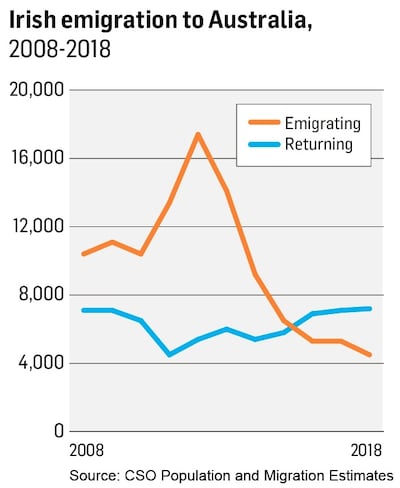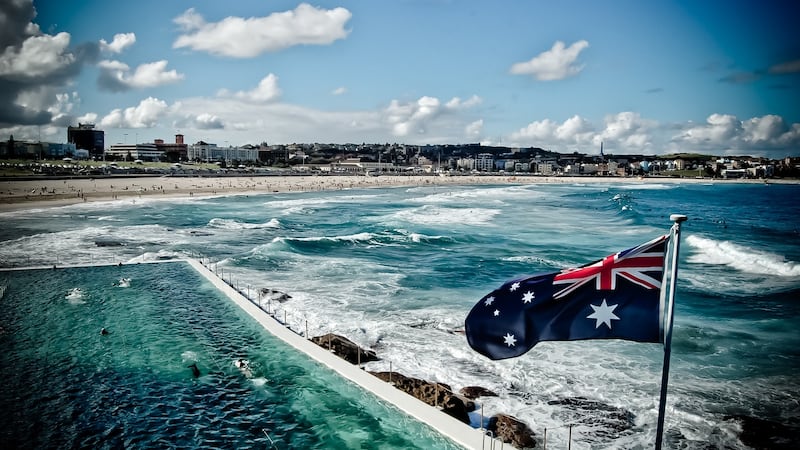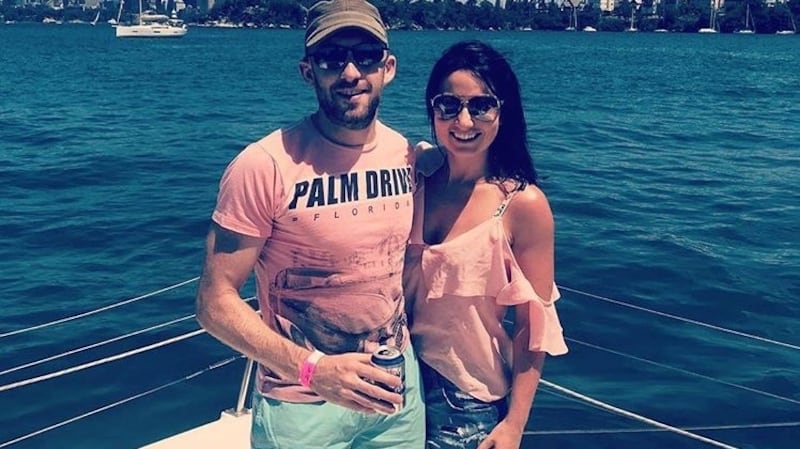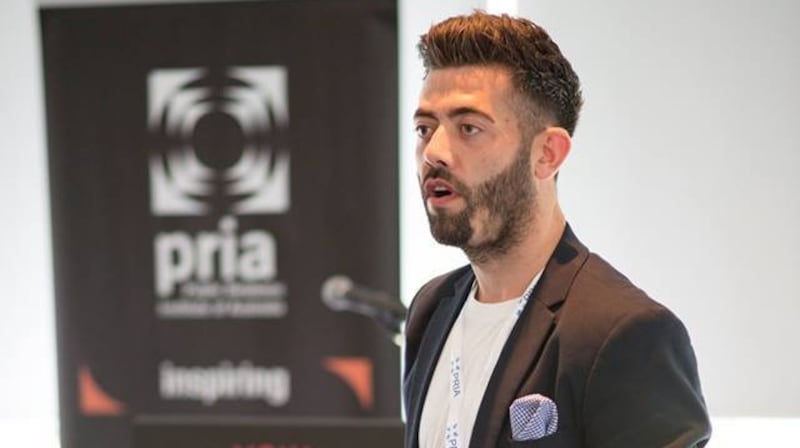In the past decade, almost 100,000 people have boarded a plane and moved to Australia. That's an average of 27 people every day, for 10 years. When the annual number peaked at the height of the Irish recession in 2012, that daily figure was almost double.
Australia has been a popular destination for Irish backpackers for decades. Well before the crash, thousands of Irish under-30s were heading down under every year on the popular working holiday visa programme, to travel and pick up some casual employment along the way to fund their trip.
But when the recession hit Ireland in 2008, the demographic of Irish people applying for these visas took a dramatic turn. Australia was virtually the only English-speaking country in the world that wasn't experiencing a financial crisis.
As unemployment soared in Ireland and the Australian economy continued to thrive and grow, so too did the numbers of Irish using the visa as an employment opportunity or pathway to permanent residency in Australia, rather than for tourism.
In the 12 months to June 2012, almost 26,000 Irish were granted a working holiday visa for the first or second time.
Australian employers and government officials were travelling to Ireland every few months to attend working abroad recruitment fairs, to entice recently unemployed but highly skilled and experienced Irish workers to fill skills gaps, particularly in the resource-rich region of Western Australia which was in the midst of a mining boom.

Carpenters and joiners were being offered the most employer-sponsored visas, followed by engineers, project administrators, electricians, plumbers, architects and motor mechanics.
Nurses, midwives and other healthcare workers were being recruited to work in state-of-the-art hospitals in the big cities, while the Western Australian Police actively targeted Irish gardaí to join the force.
Australia was absorbing tens of thousands of victims of the crash in Ireland, and rewarding them with high wages under much sunnier skies.
Census
Although a significant proportion of these workers stopped only for a short time in Australia, many have stayed on, swelling the Irish population down under. On census day in August 2016, 74,895 Irish-born people were living in the country, up 11 per cent on 2011, and 49 per cent since 2006.
A deep dive into the statistics reveals how they are putting down roots in the country, and continuing to thrive.
Almost 44 per cent of these Irish-born people have arrived there since 2006. More than half now have Australian citizenship, and one in three has an Australian spouse or partner. Fifty-eight per cent own their own home.
They are doing particularly well at work. Seventy-one per cent are in full-time employment, compared with 58 per cent of Australians and immigrants of all nationalities.
Just 3.4 per cent of Irish were unemployed on census day in 2016, half the overall rate. They are also working in much more senior roles than the average population: 29 per cent are professionals, 20 per cent are technicians and tradespeople, and 16 per cent are managers.
And they earn a lot more than the average worker. The median weekly income for the Irish-born population in Australia is $1,113 (€704) per week, compared with just $662 overall.

Changing patterns
The mass influx of Irish people looking to establish themselves in Australia has brought new life to the Irish communities in Perth, Sydney, Melbourne and Brisbane especially. GAA clubs, Irish dance schools, business organisations and mother and baby groups opened and flourished.
But things have changed in the past three years, in Perth especially. A downturn in the mining sector around 2014, coinciding with a number of the bigger projects coming out of construction phase, resulted in thousands of layoffs, which had a huge impact on the Irish community there.
In 2012, Tipperary teacher Eimear Beattie was one of six teachers giving free Irish language classes to 78 Irish children in Perth. All five others have now moved back to Ireland. “They always had the intention of doing so,” she says. “Most had a ‘five-year plan’ to save as much as possible.”
Beattie, who is president of the Irish Families in Perth social network, says there has been a “mass exodus” from Perth since 2014. At its peak, an estimated 40,000 Irish were living in the city. The 2016 census figures show the dramatic drop, with just over 18,000 remaining. Most families have returned to Ireland, she says, while the singles have gone to the east coast, Canada or London.
For those who have stayed, like Beattie and her family, Australia still offers an unrivalled way of life. And the downturn in the mining sector has had a positive impact on the cost of living. Rents in Perth have decreased 19 per cent in the past four years, and the $7 coffees are a thing of the past.
In line with the fall in Irish unemployment rates – from 14 per cent at the height of the recession in 2012, to just 5.3 per cent in November this year – the numbers leaving Ireland for Australia have also steadily dropped.
In the 12 months to April this year, just 4,500 made their way down under, falling from 17,400 in 2012. Return migration has overtaken departures, with 7,200 people immigrating from Australia in the past year.
Lifestyle
According to Melbourne-based Barry Corr, chief executive of the Irish Australian Chamber of Commerce, lifestyle factors are the biggest draw back to Ireland, facilitated by an improving economy.
“They are moving back to get married, send their kids to school in Ireland, or care for an ageing parent. And it is fantastic that Ireland is doing well enough that these people can have a job to go back to; even if they have to pay through the nose for somewhere to live,” he says.
“Not a week goes by that I’m not contacted by an employer in Ireland asking how they can entice Irish workers back.”
But he also gets regular phone calls from employers in Australia, asking how they can attract skilled and experienced workers from Ireland, particularly in the engineering professions to fill roles on big-budget infrastructure projects in Melbourne and Sydney. There’s a tug of war going on for Irish talent.
Five years ago, the chamber started a mentoring programme for young Irish professionals “arriving in difficult circumstances”. But the type of worker arriving now is choosing to do so for lifestyle reasons, or to gain experience on projects on a much larger scale than they could in Ireland.
“From a professional career development perspective, Australia is still a great place to be,” he says.
A tightening of immigration rules and the end in March this year of the “457 visa” programme, which was very popular with skilled Irish immigrants, has made it more difficult for workers to secure employer sponsorship in Australia. But the government’s long-term skilled occupation list still contains hundreds of occupations eligible for four-year temporary and permanent residence visas, including secondary teachers, the majority of trades, IT, health and engineering.
“The government is still committed to bring in over 160,000 permanent residents each year,” says John McQuaid of Arrive Australia Migration Services in Sydney.
“Australia, like many countries, needs Ireland’s skilled people to come here to continue to build what is, in modern respects, still a very young and fast-growing country.”
In an effort to boost the numbers of Irish coming on working holiday visas, Australia announced in October that they were raising the age from 30 to 35, and allowing applicants to stay for three years in total.
According to Fidelma McCorry Breen, who has recently completed her PhD on migration flows from Ireland to Australia, Irish people will always be attracted to a life down under.
“Irish immigration to Australia will continue whether the Irish economy bounces back to Celtic Tiger dimensions or not, for emigration to Australia is a firmly entrenched part of Ireland’s emigration culture.”
Everyone gets a ‘fair-go’ in Australia
Lisa Ring, a 34-year-old chartered accountant from Rathfarnham in Dublin, tells a typical tale of the Irish “accidental emigrant” experience in Australia. She trained with Ernst & Young in Dublin before the recession hit and her contract ended. She, along with most of her accountant friends, headed for Sydney and settled around Bondi and Coogee.

We were able to buy a four-bedroom house with a massive back garden. It would have taken me a lot longer to get on the property ladder in Ireland or Sydney
“I got the dream job in Yahoo 7, on triple figures. All of my friends got great jobs too,” she says.
Having intended to spend just three months in Australia, Ring was with Yahoo for four years before leaving Sydney to travel. On this trip she met her Australian husband-to-be. The couple now live in the regional town of Dubbo, with their three children. “We were able to buy a four-bedroom house with a massive back garden. It would have taken me a lot longer to get on the property ladder in Ireland or Sydney.”
Australian companies place a lot of emphasis on a positive work-life balance, says Ciara Moore, a 32-year-old nurse from Greystones who emigrated to London after graduating in 2012, before moving on to Sydney in 2015.

“Work starts on time, for the most part finishes on time, and I do not remember the last time I could not take a lunch break, unlike when I trained in Ireland as a nurse or worked in the busy understaffed NHS, where breaks were often a luxury.”
Wages
Intensive care nurse Susan Molloy (30) arrived in Sydney in February. Better wages were a huge draw; her salary is now almost double what it was in Ireland, where she earned just €18 per hour.

“The cost of living is higher here but it is relative to what you earn. I go to restaurants regularly, I am free to socialise without any worry about the expense. I have been on holiday twice since I arrived. I have managed to save towards a mortgage deposit. My quality of life has vastly improved. I am happier. I feel less stress.”
For 26-year-old primary school teacher Sinead Carr, Australia offered infinitely better opportunities than the prospect of going on a “panel” for temporary work in Ireland. She and her partner arrived in Australia with working holiday visas in May 2017. She spent the first year working casual teaching contracts in Melbourne, while he worked in construction and landscaping.
“Within a few short months of hard grafting among the Irish ‘tradies’ in Melbourne, he was earning $50 an hour. I was earning $360 a day, picking and choosing when and if I would work. High wages, combined with the low 15 per cent tax rate for working holiday makers, meant we were living the life we dreamed of.”
The couple have since moved to Ali Corung, a remote indigenous community in the Northern Territory, where she was offered a two-year teaching contract with a salary of $90,000, two return flights a year, 12 weeks’ paid holidays, and a three-bedroom house rent-free, which has given them the opportunity to save for a mortgage.
For those in construction, the scale of the infrastructure projects under way around Australia offers incomparable opportunities for career progression. Electrician Stephen Pollock was working as a “sparkie” for a small firm before he left Ireland eight years ago. Now living in Perth, he is a maintenance supervisor on Gorgon, one of the world’s largest LNG plants.
“My whole life has changed and I would never have got those kinds of opportunities in Ireland,” he says.
For Neil O’Sullivan, who has lived in Sydney since 2011 and opened the city’s first infrared sauna Nimbus & Co with his fiancée Su Tuttle, “the best thing about Australia is their propensity to push themselves”.

“If you’d have asked me five years ago would I be a start-up business owner, I would have laughed at you. To rob the Aussie saying, ‘everyone deserves a fair-go’. You certainly are pushed, or at least given the opportunity, to give things a go here. Maybe that’s why as a country it continues to grow.”












